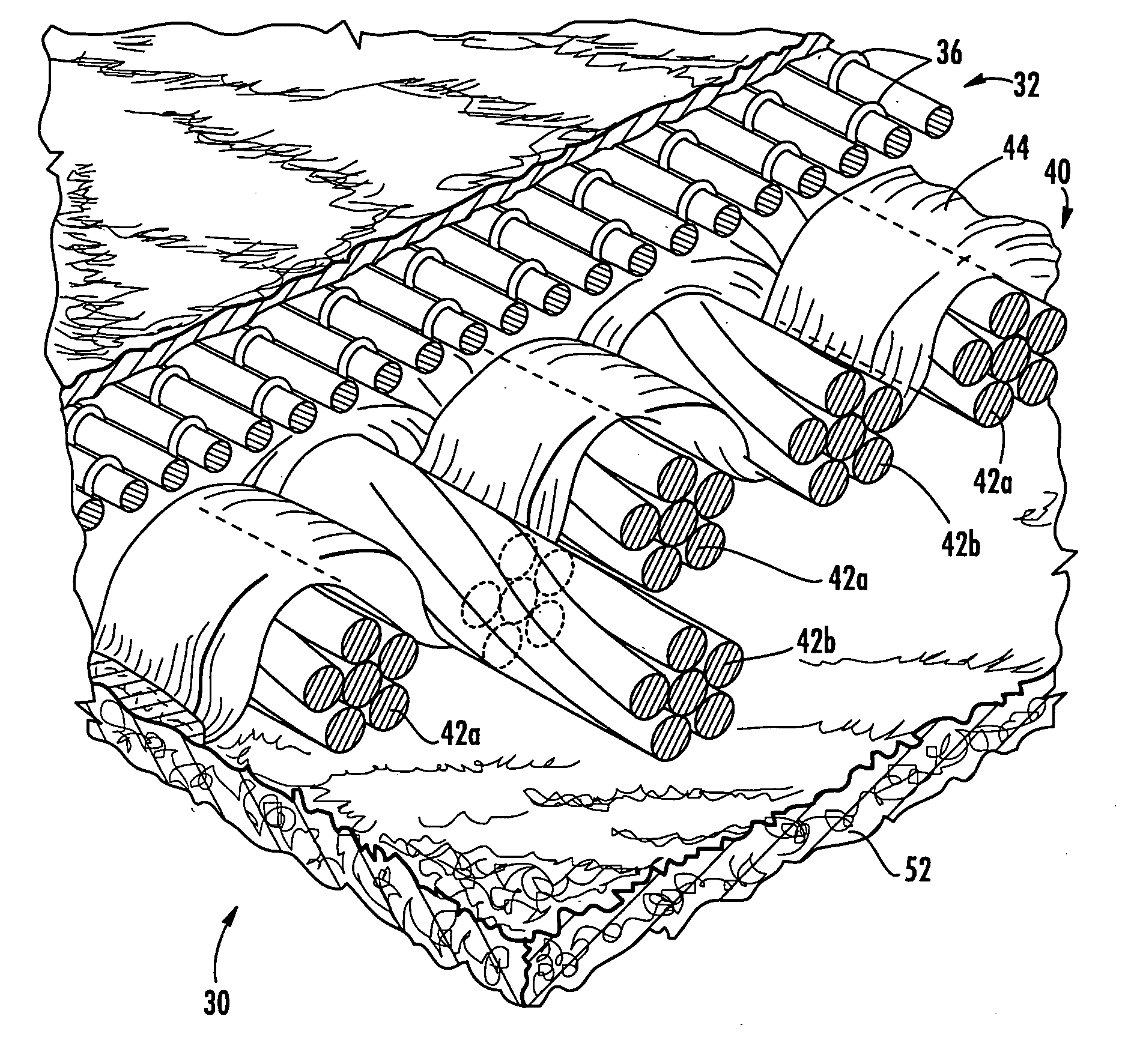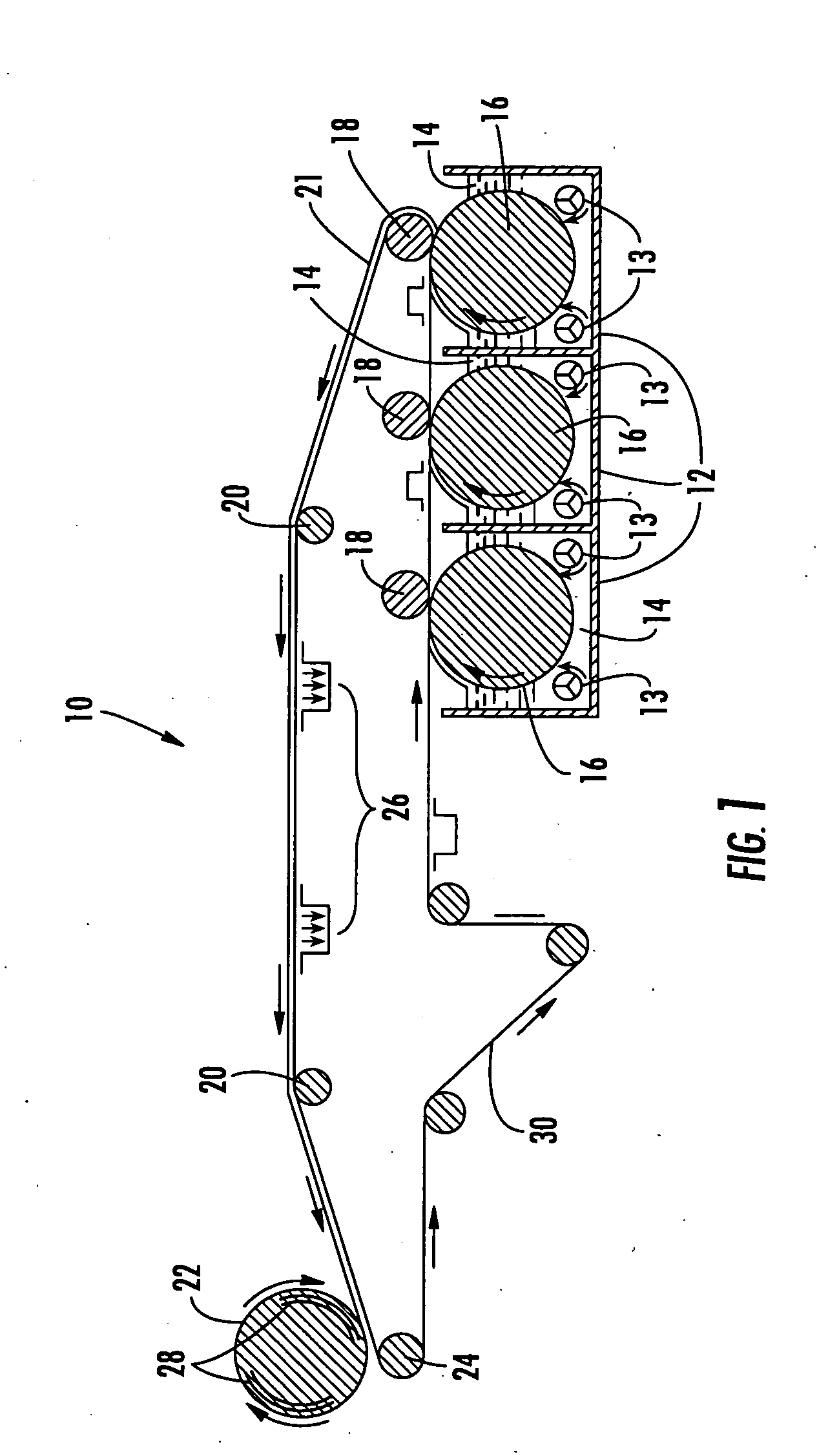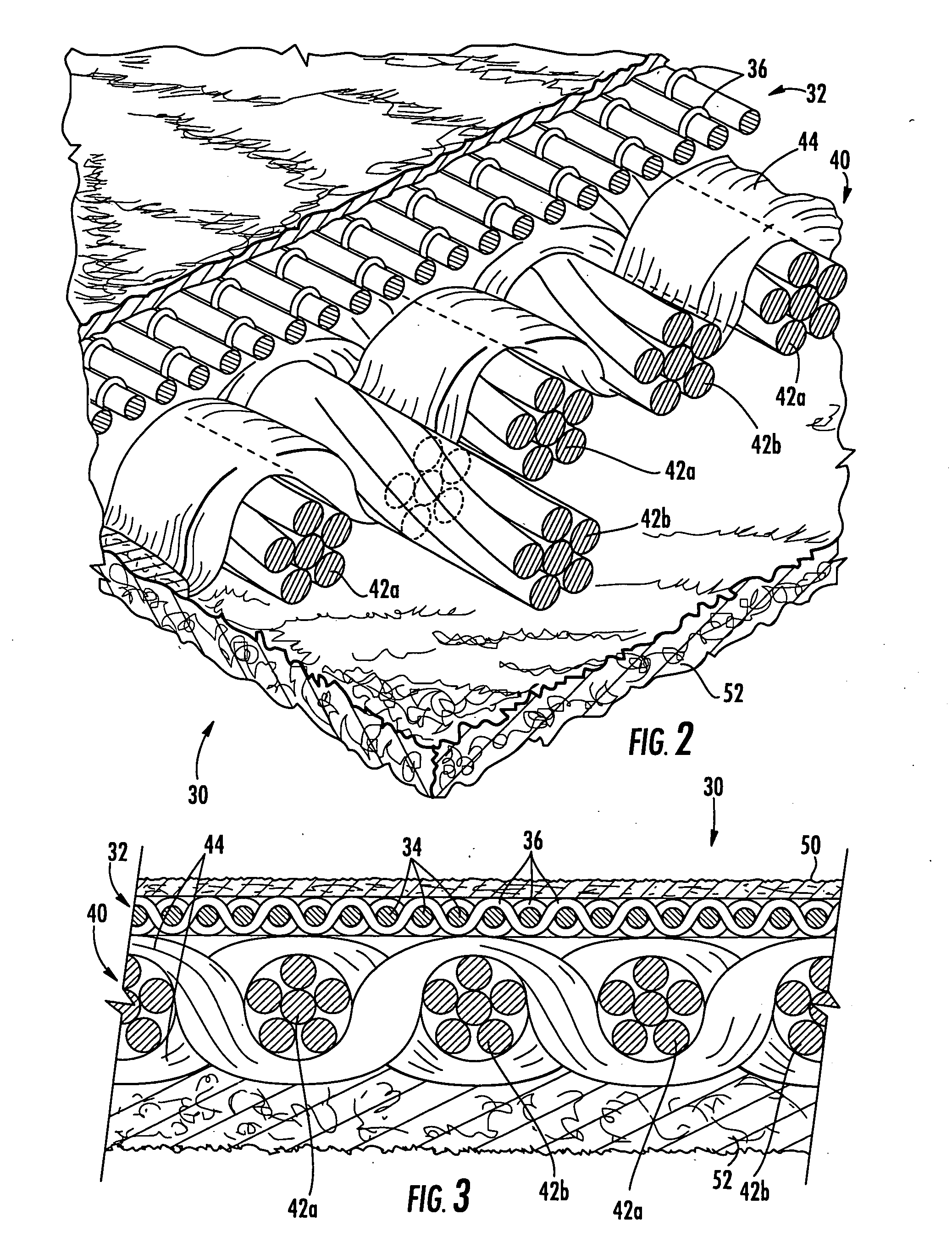Felt for forming fiber cement articles having stretch-resistant yarns
a fiber cement and yarn technology, applied in the field of fiber cement, can solve the problems of fiber cement felts being prone to blinding, fiber cement felts are typically exposed to high load conditions, and felts are prone to significant “compaction, so as to improve stretch resistance and tenacity
- Summary
- Abstract
- Description
- Claims
- Application Information
AI Technical Summary
Benefits of technology
Problems solved by technology
Method used
Image
Examples
Embodiment Construction
[0015] The present invention will now be described more fully hereinafter, in which embodiments of the invention are shown. This invention may, however, be embodied in different forms and should not be construed as limited to the embodiments set forth herein. Rather, these embodiments are provided so that this disclosure will be thorough and complete, and will fully convey the scope of the invention to those skilled in the art. In the drawings, like numbers refer to like elements throughout. Thicknesses and dimensions of some components may be exaggerated for clarity.
[0016] As used herein, the terms “machine direction” (MD) and “cross machine direction” (CMD) refer, respectively, to a direction aligned with the direction of travel of the fiber cement felt on a fiber cement forming machine, and a direction parallel to the fabric surface and transverse to the direction of travel. Also, both the flat weaving and endless weaving methods described hereinabove are well known in this art,...
PUM
| Property | Measurement | Unit |
|---|---|---|
| breaking elongation | aaaaa | aaaaa |
| breaking elongation | aaaaa | aaaaa |
| thickness | aaaaa | aaaaa |
Abstract
Description
Claims
Application Information
 Login to View More
Login to View More - R&D
- Intellectual Property
- Life Sciences
- Materials
- Tech Scout
- Unparalleled Data Quality
- Higher Quality Content
- 60% Fewer Hallucinations
Browse by: Latest US Patents, China's latest patents, Technical Efficacy Thesaurus, Application Domain, Technology Topic, Popular Technical Reports.
© 2025 PatSnap. All rights reserved.Legal|Privacy policy|Modern Slavery Act Transparency Statement|Sitemap|About US| Contact US: help@patsnap.com



